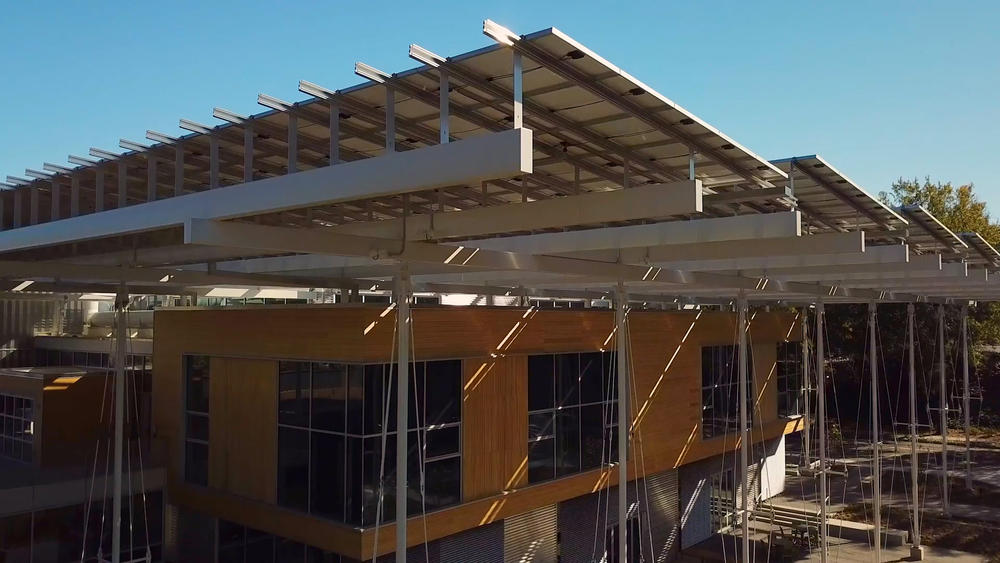
Section Branding
Header Content
Georgia Tech Experiment Declared South's First 'Living Building'
Primary Content

An experiment in sustainable buildings on the campus of Georgia Tech has been deemed a success.
There are a number of buildings in the Pacific Northwest and Europe that generate more electricity and potable water than they need, but until now there have been none of the so-called Living Buildings in the American South.
The Kendeda Building on the Georgia Tech campus opened in 2019 and is the first. So says the International Living Future Institute after pouring over a year’s worth of energy and water use data.
Over that time, rooftop solar panels on the building generated 225% of the electricity used for classrooms and meeting spaces. Rain collected and treated provided 15 times the needed water. Much of that was used to heat and cool the building through special piping running through the concrete floors.
“It’s helped us rethink what a campus is,” Georgia Tech president Angel Cabrera said. “It’s to be an example of sustainability.”
In that spirit, the extra electricity generated at the Kendeda Building will continue to be used by other buildings on the Tech campus.

